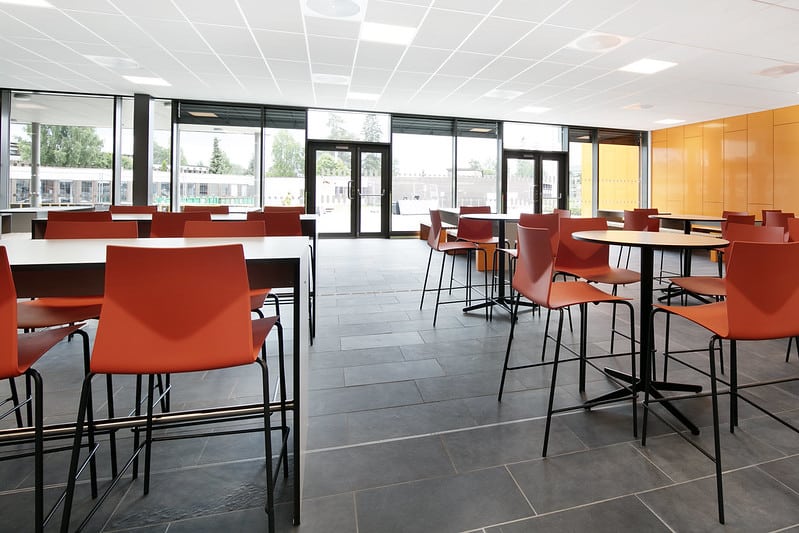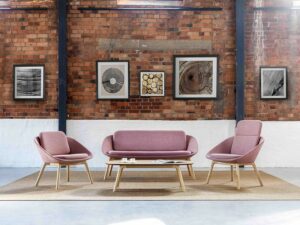Colour is a powerful tool that influences our emotions, moods, and behaviours. It plays a significant role in our everyday lives, including our work environments. Understanding the impact of colour psychology in the workplace can help create a harmonious and productive atmosphere. In this blog post, we’ll explore how different colours affect employees’ well-being, productivity, and overall job satisfaction.
The Power of Colour
Colour psychology is the study of how colours can affect human behaviour and emotions. Various colours have distinct psychological effects on individuals, making them suitable for different settings. When applied thoughtfully in the workplace, colours can positively influence employees and contribute to a healthier work environment.
Blue: Promoting Calmness and Focus
Blue is often associated with calmness, tranquillity, and stability. It has a soothing effect that can help reduce stress levels and promote mental clarity. In the workplace, blue can be an excellent choice for areas where focus and concentration are crucial, such as conference rooms, offices, or creative spaces. However, too much blue can lead to feelings of sadness or coldness, so it’s important to balance it with warmer hues. Here’s a great example of where our Tessellate panels have been used within an office environment to create a calm and soothing workspace.
Green: Enhancing Creativity and Well-being
Green is commonly linked to nature, growth, and balance. It has a refreshing and rejuvenating effect, promoting a sense of harmony and reducing anxiety. Green can be beneficial in workspaces that require creativity, such as design studios or brainstorming rooms. Additionally, incorporating plants or natural elements with greenery can further enhance the positive effects, improving air quality and overall well-being.
Yellow: Boosting Energy and Positivity
Yellow is associated with happiness, optimism, and energy. It stimulates the brain, enhances focus, and promotes a positive atmosphere. Adding touches of yellow in communal areas, such as break rooms or shared spaces, can encourage social interaction and boost morale. However, it’s essential to use yellow sparingly, as excessive exposure may lead to feelings of irritation or anxiety. Here you can see how the FourAll Lounge chairs have been used to create an inviting communal space using neutral colours and a pop of yellow to add vibrancy and a bit of playfulness.
Orange: Encouraging Enthusiasm and Communication
Orange is a vibrant and energetic colour that symbolizes enthusiasm, warmth, and sociability. It can stimulate mental activity and promote positive communication among individuals. Using orange in collaborative areas or meeting rooms can help foster teamwork, creativity, and open discussions. However, like yellow, it’s best to use orange as an accent colour to prevent it from overpowering the space. Here our FourSure 66 chairs have been combined with our InnoTab tables to create a great space for collaboration – the bright orange colour not only looks great, it adds a dynamic and invigorating touch to the environment. Its vibrant hue can evoke feelings of excitement and energy, setting a lively tone for productive interactions and brainstorming sessions.

Red: Increasing Alertness and Confidence
Red is a bold and intense colour often associated with passion, strength, and stimulation. It can increase heart rate, blood pressure, and stimulate the senses. In the workplace, red can be effective in areas that require physical activity or when promoting a sense of urgency. However, too much red can be overwhelming and create a sense of aggressiveness. It’s advisable to use red as an accent colour rather than the main colour scheme. Here we see the FourCast 2 Counter Four to create a communal space that energizes and encourages interaction. The vibrant red hue of the chairs add a dynamic touch to the space, instantly capturing attention and creating a focal point. The boldness of red stimulates conversation, making it an ideal choice for a gathering place where collaboration and socialization are encouraged.
Pink: Inspiring Calmness and Compassion
Pink is often associated with softness, compassion, and tranquillity. It has a gentle and nurturing effect that can create a calm and soothing environment. Incorporating pink elements in relaxation areas or quiet zones can promote relaxation, reduce stress, and encourage self-care. Pink can also be used to add a touch of warmth and femininity to a workspace. Here we see the Dishy chairs, upholstered in a soft blush pink fabric. The delicate pink hue of the chairs complements the overall aesthetic, enhancing the sense of tranquillity and comfort.
Purple: Stimulating Creativity and Imagination
Purple is often associated with creativity, imagination, and spirituality. It has a unique combination of calming blue tones and energetic red tones, making it a powerful colour for inspiring innovative thinking. Incorporating purple accents or using it in creative spaces can stimulate the mind and encourage out-of-the-box ideas. However, it’s important to use purple strategically and sparingly, as too much of it can be overwhelming.
Neutral Tones: Promoting Balance and Professionalism
Neutral tones, such as grey, beige, or white, create a sense of simplicity, elegance, and professionalism. They provide a versatile backdrop for other colours and can be used as the primary colour scheme for a calming and focused work environment. Neutral tones also allow employees to personalize their workspaces without clashing with the overall aesthetic.
Creating a space to foster employee well-being
Understanding the impact of colour psychology in the workplace can significantly influence employees’ well-being, productivity, and job satisfaction. By strategically incorporating colours that align with the desired atmosphere, employers can create a harmonious and stimulating work environment. It’s important to consider the specific goals and nature of the work being done when choosing colour schemes for different areas within the workplace.
Remember that individual preferences and cultural backgrounds can also influence the effects of colour. Therefore, it’s advisable to consult with employees or seek professional advice when implementing colour schemes in the workplace. By harnessing the power of colour psychology, organizations can create a space that fosters creativity, productivity, and overall employee well-being.






